S'sonic
Stealth
Menu
A free template by Lucknowwebs.com for WYSIWYG WebBuilder 8
Nigel G Wilcox
Powered by Sispro1-S
Paragon Of Space Publication
© Copyright Reserved - United Kingdom
Ideal Screen Composition 1024 x 768
SITEMAP
PSEUDO SCIENCE
SCIENCE RESEARCH
ABOUT
Desk
Supersonic
Stealth
Study
Menu
MAIN INDEX
Fastest Air Planes
Space
Transport
Menu
B5-Tu-22 Blinder
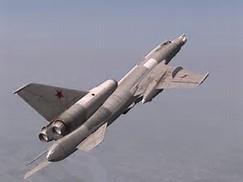
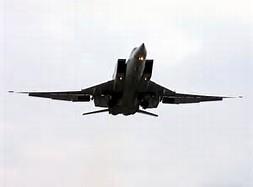
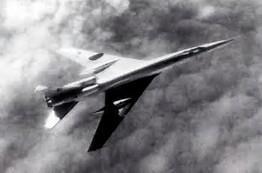
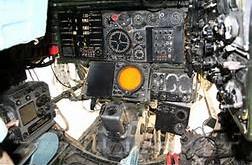
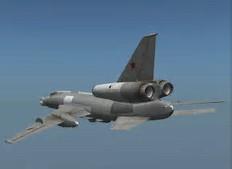
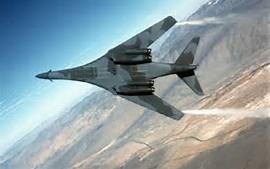
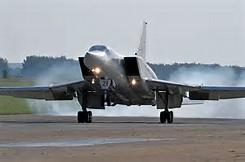

The Tu-22 'blinder' was the first Soviet supersonic bomber design intended to replace the Tu-16. The Tu-22 original design was aimed at creating a bomber that could avoid contemporary fighter interceptors utilizing its high speed and altitude. The medium range Tu-22 would strike Anglo-American bomber bases and other NATO key targets including US Navy Carriers in Europe and Asia.
The Tu-22 design features a long, slender, tube-like fuselage with a sharp pointing nose and swept-back wings. The aircraft was nicknamed 'Shilo' (awl) by its aircrew for its metallic, pointed shape. The two Dobrinin VD-7M engines are located in pods above the main body, one at either side of the tailplane. From 1965 onwards these were replaced by the improved Kolesov RD-7M2 engine. The layout improved the airflow into the engines, while minimizing the chance of debris sucked up from the ground. Downside of the design was the troublesome maintenance of the engines at this positions, the required reinforcement of the tail section and the forward section had to be lengthened because the centre of gravity was at the rear of the aircraft. The main landing gear is retracted into separate nacelles extended beyond the wing.
In order to decrease the frontal cross section of the design, the Tu-22 only had one pilot. The navigator sits in front and below the pilot and can only see below the aircraft. The communications/navigation/weapons officer occupies the rear seat which is behind the pilot and only can look out through the side windows. The crew would enter and exit the cabins by being raised and lowered in their K-22 ejection seats. The seats would fire downwards, making ejection during take off and landing impossible.
First production variant developed was the Tu-22A (in-house designation Samolet 105A, NATO: 'Blinder-A') which only carried free-fall bombs. Because of the conventional bomber role and similar 'B' configuration for export, the variant is often referred to as Tu-22B. The payload depended on the mission, but could consist of 24 FAB-500 500kg (1,102 lb) bombs. The radar equipped was the surface-search Rubin-1A radar. However because of the trouble prone design and the increasing threat of Surface-to-Air Missiles only 15 Tu-22A were built. Most of which served only as test aircraft and trainer.
The Tu-22R 'Blinder-C' was the second variant, which was developed as a reconnaissance platform. Film camera was equipped in the nose and in the weapons bay. It retained the free-fall bombs capability, including the bomb sight and weapons control system and search radar and was also equipped with the Romb electronic intelligence system. A total of 127 Blinder-C were built. The Tu-22R was operated by both the air force and the navy reconnaissance regiments. The suffix -D was added to all the aircraft that were equipped with the in-flight refuelling probe on the nose of the aircraft. D standing for dalniy, long range. A small number of Tu-22R were converted to Tu-22RK or Tu-22RDK featuring the Kub electronic intelligence system to detect air defence radars. Later a small number was converted to Tu-22RDM having advanced reconnaissance package, including the M-202 Shompol side-looking radar.
Following the Tu-22R was the Tu-22U 'Blinder-D' trainer. A trainer version was found necessary because of the highly different handling characteristics compared to the earlier Tu-16. Simulators were very crude and gave only a rough indication of the handling. On the station that was formerly occupied by the weapons officer a raised cabin was constructed for the instructor. The trainer version lacked the tail gun and fuel capacity was decreased. A total of 46 Tu-22U 'Blinder-D' trainers were built.
The Tu-22K 'Blinder-B' was a missile carrier version of the Tu-22 and was the first real combat capable Blinder to be operational. Because of the introduction of ballistic missiles, the aim for the Blinder-B was maritime strike. It was armed with the K-22 weapon system and the associated Kh-22 supersonic stand-off anti-ship missile (NATO AS-4 'Kitchen'). The Tu-22K was fitted with a modified version of the Rubin-1A radar, the Leninets PN radar (NATO 'Down Beat'). A total number of 76 Tu-22K versions were built, which was insufficient to replace all the Tu-16 which were in service as missile carriers with both the air force and the navy. The Tu-22KP designation was used for Tu-22K aircraft that were fitted with Kurs-N and later Kurs-NM electronic intelligence system, which scanned for NATO air defence radar emissions. It was equipped with an anti-radar version of the Kh-22 the Kh-22P.
The Tu-22P 'Blinder-E' was an electronics intelligence variant of the Tu-22 and features the REB-K ELINT system mounted in the bomb bay and had its tail gun replaced with a SPS-100A Rezeda-A jamming station. Although some Tu-22P retained the original self defence machine guns. The Tu-22P task was to locate US Navy carrier battle groups and/or would accompany the Tu-22K and later Tu-22M 'Backfire' missile-carriers to provide jamming support.
The Tu-22A variant 'B' conventional bomber was exported to Iraq and Libya. Delivered between 1973 and 1983, the order contained Tu-22R aircraft converted back to a Tu-22A configuration designated variant 'B' for export. Also several Tu-22R photo-reconnaissance and Tu-22U trainers were delivered with some modifications for use outside the USSR service.
There has been one Tu-22R converted to server as a high-speed equipment test-bed. The aircraft was designated Tu-22LL, LL standing for letayuschchaya laboratoriya or flying laboratory. The aircraft features a modified nose cone and resides at the Russian flight test institute at Zhukhovsky.
Role: Medium Bomber, Recon, Jammer
Origin: Russia
Design: Tupolev
Production: State Aviation Plant No.22 Kazan
Variants: Tu-22A/'B' (Blinder-A),
Tu-22K/KD/KDP/KPD (Blinder-B),
Tu-22R/RD/RK/RDK/RM/RDM/RDM-2 (Blinder-C),
Tu-22U (Blinder-D), Tu-22P/PD (Blinder-E)
Operators*: Russia/USSR, (Ukraine), Iraq, Libya

General characteristics
Crew: three - pilot, navigator, weapons officer
Length: 41.60 m (136 ft 5 in)
Wingspan: 23.17 m (76 ft 0 in)
Height: 10.13 m (33 ft 3 in)
Wing area: 162 m² (1,742 ft²)
Loaded weight: 85,000 kg (187,000 lb)
Max. takeoff weight: 92,000 kg (203,000 lb)
Powerplant: 2 × Dobrynin RD-7M-2 turbojets
Dry thrust: rated 107.9 kN (24,300 lbf) each
Thrust with afterburner: 161.9 kN (36,400 lbf) each
Performance
Maximum speed: 1,510 km/h (938 mph, Mach 1.42)
Range: 4,900 km (3,000 mi)
Service ceiling: 13,300 m (43,600 ft)
Wing loading: 525 kg/m² (107 lb/ft²)
Thrust/weight: 0.39
Armament
Guns: 1 × R-23 23 mm cannon in tail turret
Bombs: 9,000 kg (20,000 lb) or
Missiles: 1 × Kh-22 (AS-4 Kitchen) cruise missile
The Tupolev Tu-22 was the first supersonic bomber to enter production in the Soviet Union. Manufactured by Tupolev, the Tu-22 entered service with the Soviet military in the 1960s. The last examples were retired during the 1990s. Produced in comparatively small numbers, the aircraft was a disappointment, lacking the intercontinental range that had been expected. Later in their service life, Tu-22s were used as launch platforms for the Soviet Kh-22 standoff missile, and as reconnaissance aircraft. Tu-22s were sold to other nations, including Libya and Iraq. The Tu-22 was one of the few Soviet bombers to see combat; Libyan Tu-22s were used against Tanzania and Chad, and Iraqi Tu-22s were used during the Iran-Iraq War.
Maximum speed: 1,510 km/h (938.27 mph) Maiden flight: 21 Jun 1958 Length: 136.48 ft Wingspan: 75.98 ft Passengers: 3 Manufacturer: Tupolev.












